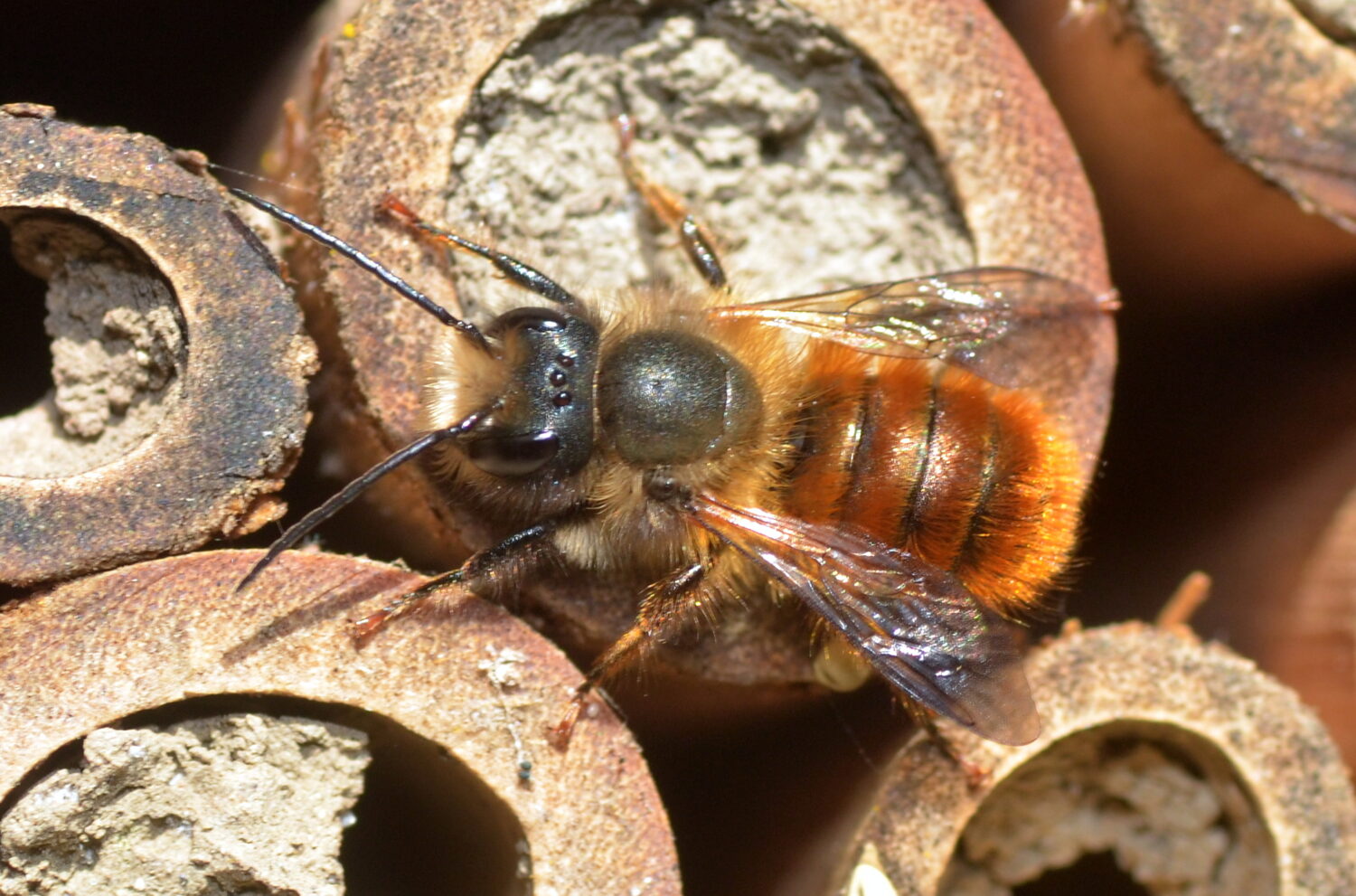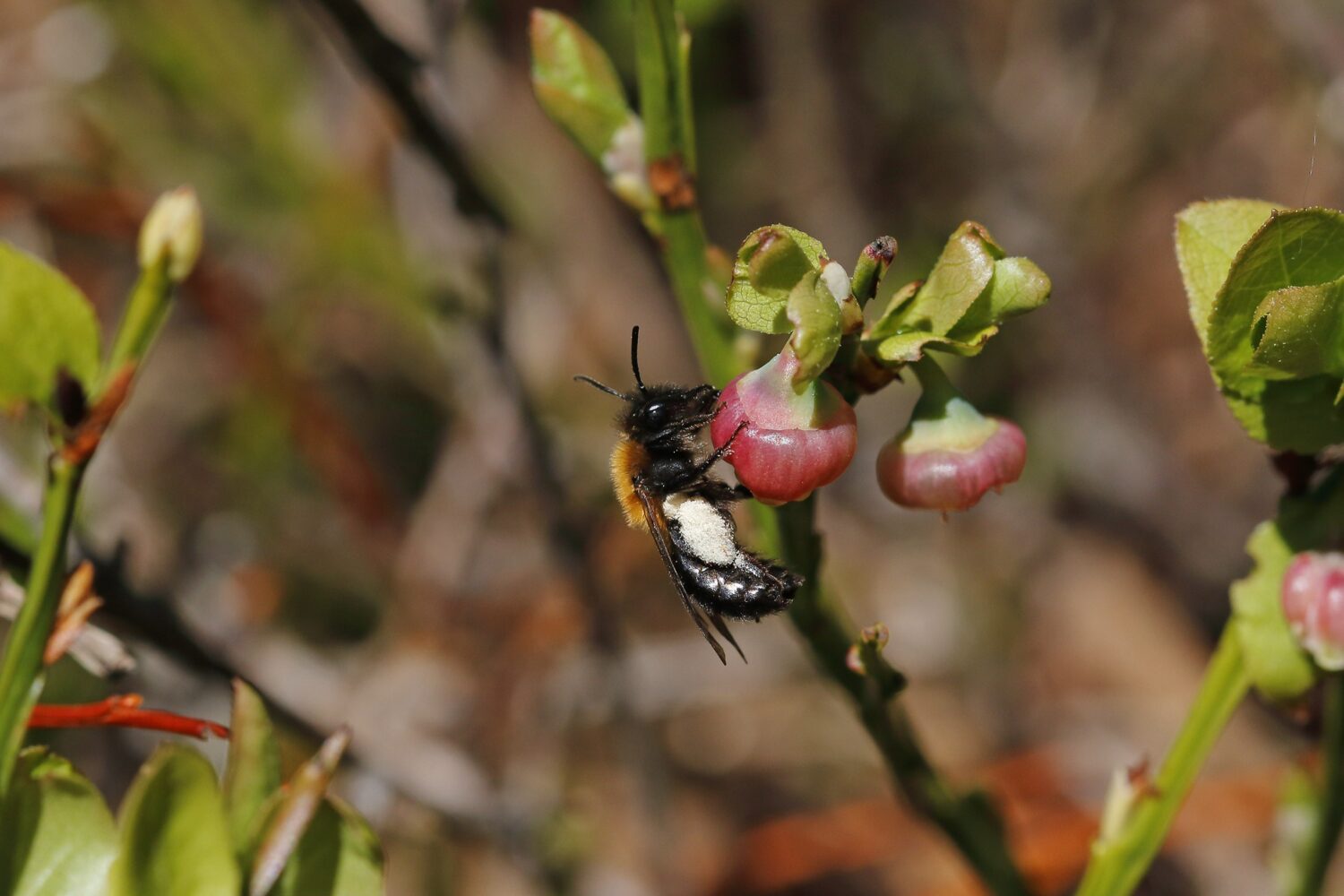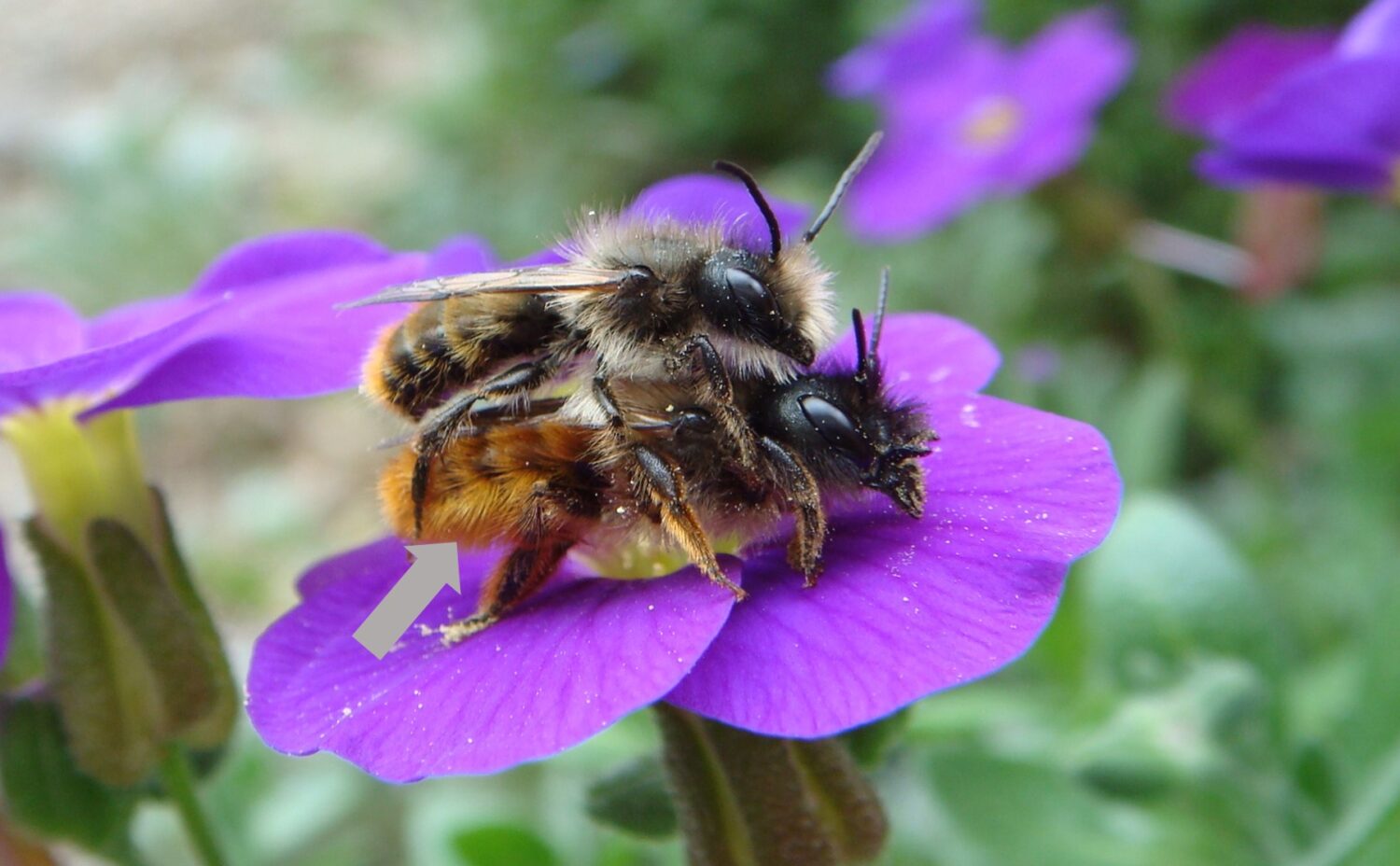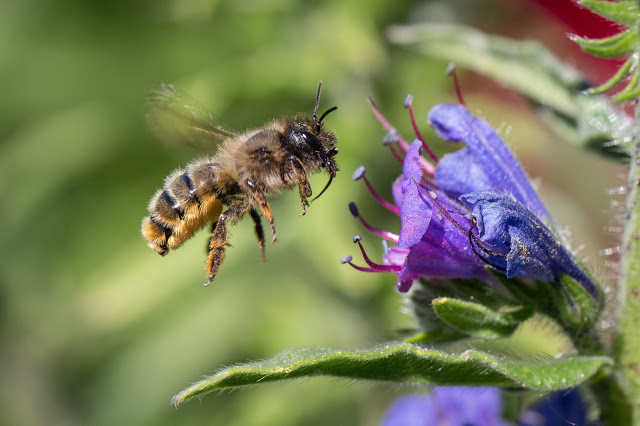Charlotte Rankin introduces you to a common garden visitor, the Red Mason Bee.
Red Mason Bees are a spring-flying species of solitary bee that you are likely to encounter in your garden and local park. As their name suggests, Red Mason Bees nest in walls and use mud to build and line their nests. Females are relatively large bees, with a light-brown thorax, orange-red abdomen and two facial horns on the head. Males are smaller, with a conspicuous tuft of light hairs on their face and longer antennae.
On the wing from March until June, Red Mason Bees require a supply of nectar and pollen from early-flowering shrubs and garden plants. They occupy a great range of habitats, with urban populations benefitting from the availability of garden bee hotels.
Males are the first to emerge from their over-wintering quarters in spring and can be seen hovering around nests awaiting emerging females. Unlike queen bumblebees and honeybees, female Red Mason Bees single-handedly construct and provision their own burrows to nest within.
Once mated, females seek a place to lay their eggs within. Females are aerial-nesters, building their nests within pre-existing holes and cavities including soft mortar, old timber and large beetle holes. Females also readily occupy artificial bee hotels found in gardens and parks.
A nesting burrow consists of a series of cells, each with an egg and pollen separated by walls of collected mud. Cleverly, females lay male eggs at the front so that males emerge first in the following year. Each egg is provisioned with protein-rich pollen that is collected by females on the underside of their abdomens.

To line and protect their cells, females carry back wet mud using their mandibles (jaws) and use their facial horns to mould this wet mud into place. Once completed, the nest is sealed and waterproofed with a mud ‘plug’.
Males and females are only on the wing for a matter of weeks before they die. Within each cell, the larvae develop and overwinter as adults. They remain within their cells until the following spring when they emerge and start the cycle again.
Discover more
The Red Mason Bee is a target bee species of the North East Bee Hunt. You can view a detailed species profile of this species on the North East Bee Hunt webpage here.

Join the North East Bee Hunt
Urban or rural, beginner or expert, we need your help to record eight distinctive bees across the North East this spring and summer.
Your records can add to our understanding of bees in the region and inform conservation and monitoring efforts.
Taking part is easy and every record counts, wherever you live in the region. Records of all bee species are encouraged.

